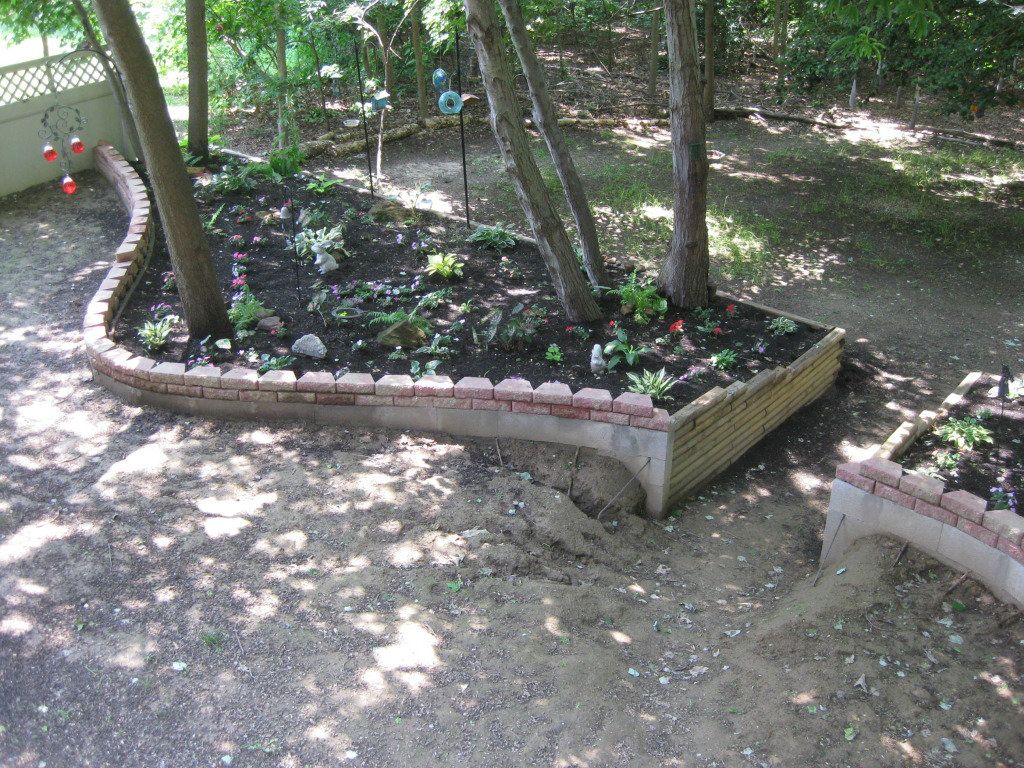@ossobuco,
Wow, a lot of good input and suggestions - although I'm
not quite sure I understand the reluctance of
ossobuco to provide advice. As in all things, the nice thing about advice is that it can be taken, or not - but if you have expertise in this area, I would be more inclined to accept your advice, than not.
Let's see. First, the suggestion about mortar mix or masonary cement sounds about right to me. And let me help out by providing a more recent picture, which shows the progress of the upslope fill dirt, along with what will eventually be two courses of decorative blocks, and the equally fun downslope garden enclosed by landscape timbers. Additional fill dirt since been placed and compacted not quite up to the level of the top of the cinder blocks.

So, we're located in rural Maryland, and due to the extended duration of this project, The Wall, has now experienced both a mild and a pretty severe winter. And as close as I can tell from my laser measurements, the wall has shifted downslope about 1/64th of an inch, and I can't detect any measurement variation that suggests any "heaving". My sense is that the wall isn't moving (okay, maybe fractionally) from either freezing or thawing or from hydrostatic pressure. I'll attribute that to the multiple 3/8" upslope rebar anchors, which are tied into 1/2" horizontal rebar in each cinder block. And there is a gravel and perforated pipe drainage system at the base of the wall.
Other suggestions?